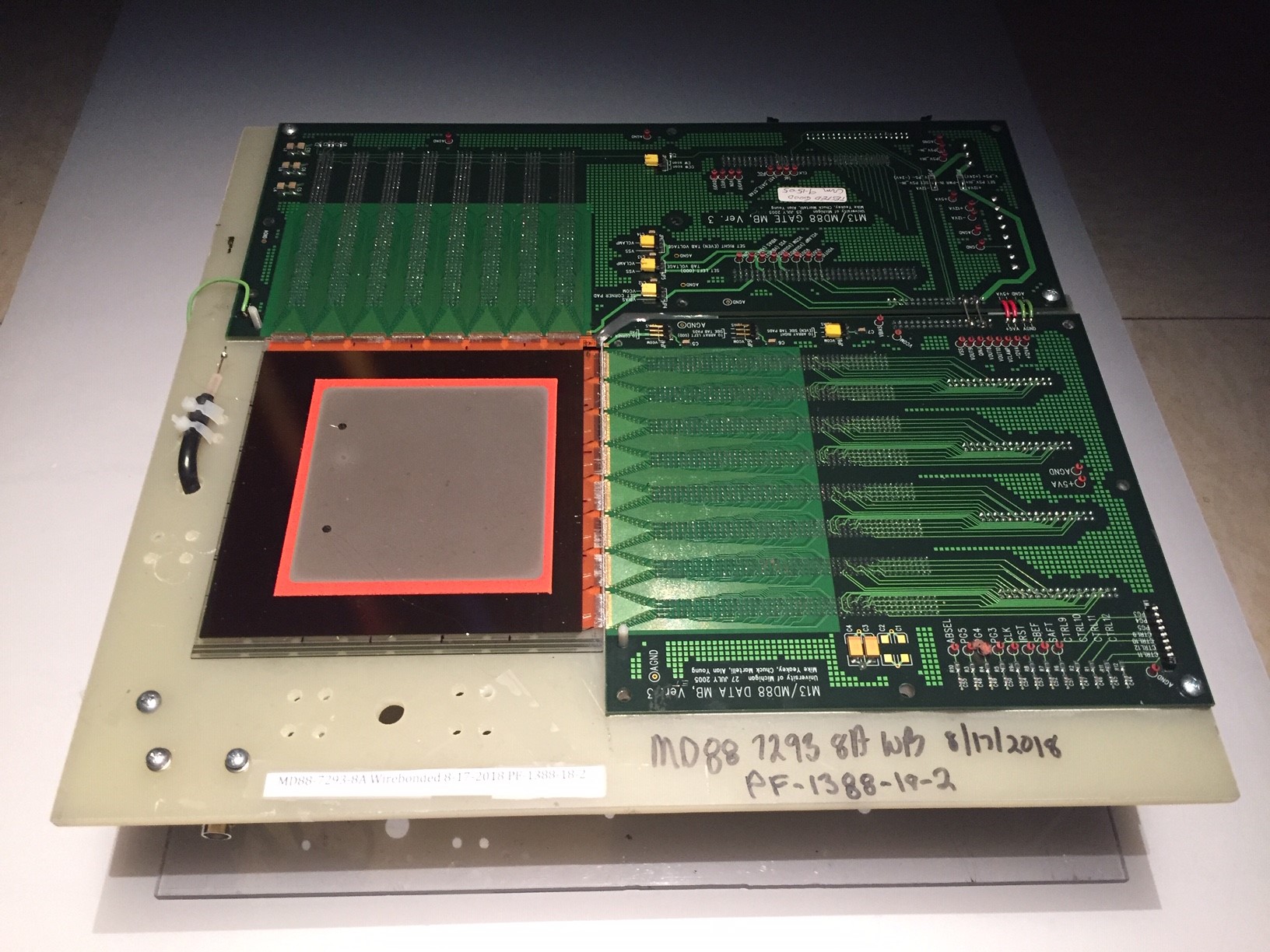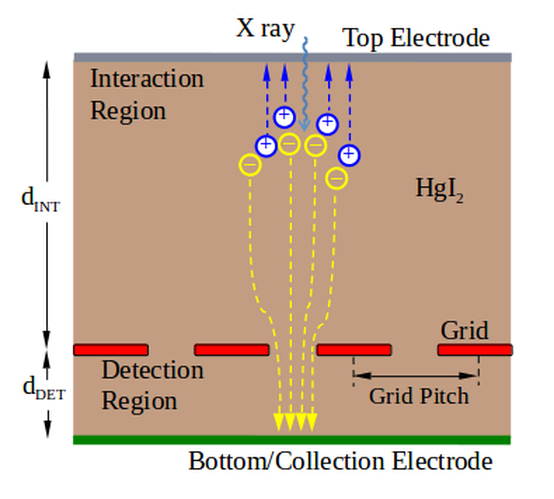Purpose
To develop a new type of x-ray converter for use in digital breast tomosynthesis (DBT) – through improvement of the signal-to-noise ratio (SNR) performance of direct detection active matrix flat-panel imagers (AMFPIs). Our group has been investigating polycrystalline mercuric iodide (poly-HgI2) – a promising photoconductive converter material which exhibits up to a factor of 10 higher x-ray sensitivity than the converters currently employed in commercial DBT systems employing active matrix, flat-panel imagers (AMFPIs). The adjacent photograph shows an AMFPI backplane (connected to printed circuit motherboards) on which a prototype poly-HgI2 converter has been deposited.

Background
AMFPI technology, which employs x-ray converters such as cesium iodide or amorphous selenium, suffers from limitations in SNR at low doses – due to limited signal compared to relatively high levels of electronic noise. This SNR limitation adversely affects image quality in applications such as DBT where each of the ~10 to 25 individual projection images required to make up a volumetric image set must be acquired at a low dose. The favorably high x-ray sensitivity of poly-HgI2 could overcome this limitation. Unfortunately, poly-HgI2 suffers from a high level of charge trapping which negatively affects imaging performance by introducing image lag as well as lowering detective quantum efficiency, DQE. (DQE is a standard metric of imager performance.) To address the problem of charge trapping, our group has been investigating the incorporation of a Frisch grid structure into the poly-HgI2 photoconductor that would reduce the contribution of holes to the imaging signal. Our hypothesis is that reduction of hole contribution to imaging signal should reduce charge trapping. The adjacent schematic drawing depicts a cross sectional view of a converter incorporating a Frisch grid.

Impact
The significant potential improvement in SNR offered by poly-HgI2 material, if combined with low image lag, should improve the performance of AMFPIs, resulting in improved image quality at significantly lower radiation dose to the patient. This will have a positive impact on DBT and could facilitate advanced applications such as very low dose fluoroscopy, chest tomosynthesis, dual-energy imaging and cone-beam computer-tomography for breast, angiographic and other procedures.
Approach
Our group has been working with industrial collaborators to design fabricate and evaluate prototype AMFPIs employing poly-HgI2 for use in breast imaging. These prototypes are subject to extensive performance evaluation, including dark current, x-ray sensitivity, lag, spatial resolution, and detective quantum efficiency. In addition, simulations employing finite element analysis are used to determine optimal design parameters and operating conditions for a poly-HgI2 converter employing a Frisch grid.
Project Funding
This research is supported by the National Institutes of Health / National Cancer Institute grant # R01-EB022028 as well as by our department.
Publications
Jiang et al., Phys. Med. Biol. 58, 703-714, 2013.
Zhao et al., Med. Phys. 37(6), 2738-2748, 2010.
Du et al., Phys. Med. Biol. 53, 1325-1351, 2008.
Su et al., Phys. Med. Biol. 50, 2907-2928, 2005.
